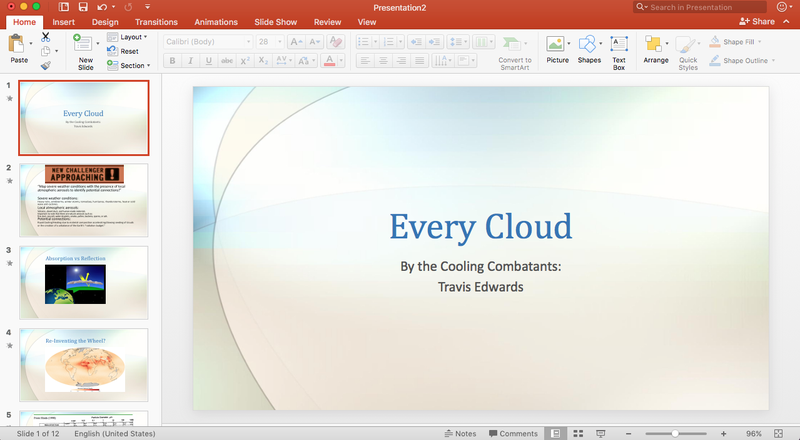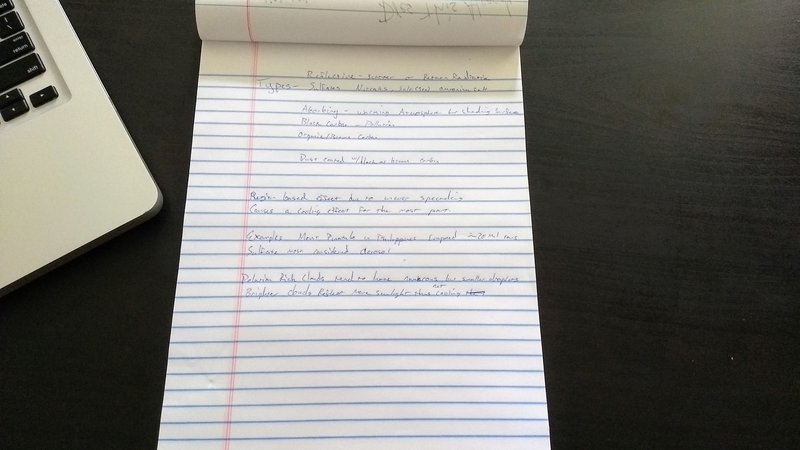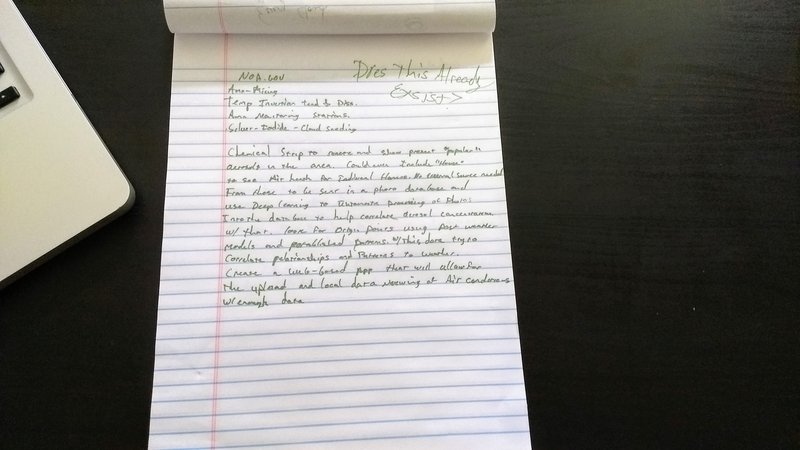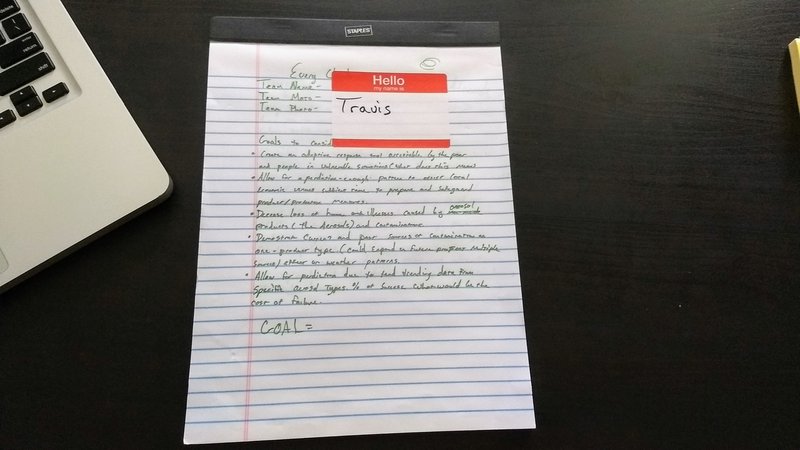Cooling Combatants | Every Cloud
Team Updates
Update:
Ok, here is the overall quick and dirty of the plan.
We need to know what the aerosols are made out of before we can make any predictive patterns is plain and simple. There are already developed methods that have been developed to figure this stuff out but either it has been applied to only "mandatory" sectors of industry or just hasn't been abstracted to a medium which would allow anyone to measure it at a costly manner.
The idea is to use an aerosol time-of-flight mass spectrometer to find the mass of the objects within certain areas, then using already known tables of mass of aerosols, an already existing tool. Applying it in nation-wide aspects such as the transportation industry; semi-trucks, delivery companies, trains, commercial planes, etc. to allow for quick and constant data flow. Develop a household size chemical based testing strip or agent to distribute at a cost-friendly manner to outlining areas or hard to reach areas for testing. Compiling this into a international database which would allow for predictive patterns of aerosol/severe weather relating to past weather patterns/material make-up.

Update:
So, after trying to pursue a chemical method of identifying which type of aerosol could be present in a high density reading from both overhead and ground sensors i found it very difficult and not really cost effective. My first thought of using ground based chemical strips went away when i realized that most of the aerosols are effectively between the low cloud range and high cloud range. The difficulty of pursing this has increased dramatically more than i had originally thought.
My idea that rather than the density but what type of aerosols in the air have a larger effect on climate change still hold strong due to the properties that they can exhibit, being reflective or absorbing.
After doing research on the way and possibilities of how aerosols can just affect clouds, most have not yet come to a conclusion but research is on going.
I know that the idea of this challenge is to map the already collected severe weather patterns with known data of aerosols and try to predict a pattern based on the occurrence between the two, i just can't help but think it isn't the right way to accurately predict a change.
My next step is still to develop a chemical process to be placed on high flying platforms to collect air sample data throughout the globe. Possibly on commercial aircraft or military platforms.



SpaceApps is a NASA incubator innovation program.